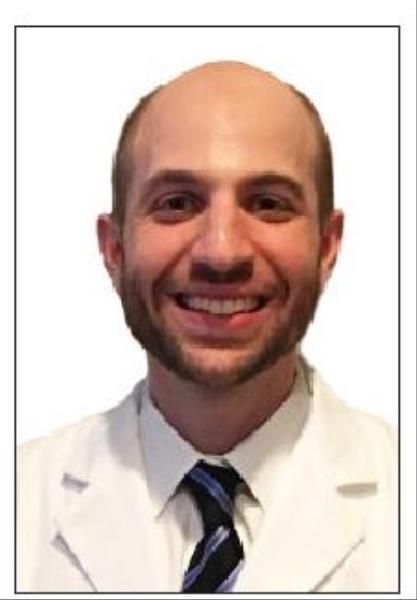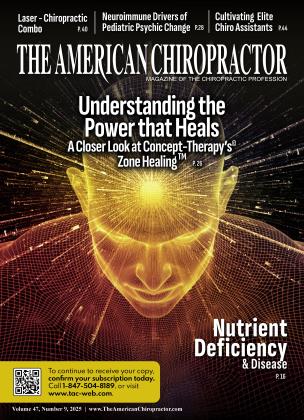
In my number one bestselling book Awaken the Wellness Within, I wrote that there is only one disease — cytopathology. Cytopathology is caused by cells that are toxic or deficient, and the only cure for it relies on the phrase that “the power that created the body has the power to heal the body.”
In the last article, we covered toxins, their origin, and how to protect cells from them. In this article, we will cover how cells become deficient and how to eliminate deficiency.
Stalling at the beginning, there are two types of deficiency — nutritional and circulatory. According to Wikipedia, “Nutritional diseases are diseases in humans that are directly or indirectly caused by a lack of essential nutrients in the diet. Nutritional diseases are commonly associated with chr onic malnutrition.”
Malnutrition is a deficiency that causes the cell to weaken when it doesn’t receive what it needs. Diseases such as rickets or scurvy are caused by a dietary deficiency of specific nutrients (i.e., a vitamin or mineral). Disease and illness may stem from insufficient intake, digestion, absorption, or utilization of nutrients. For instance, vitamin C deficiency leads to scurvy, and vitamin D deficiency can cause rickets and osteoporosis.
Symptoms of short-term vitamin or mineral deficiencies include:
• Blurry vision
• Diarrhea
• Dizziness
• Fatigue
• Headaches
• Nausea
• Vomiting
Deficiency can lead to severe, long-term consequences for growth, health, or proper bodily activities, and it can begin before birth. Life begins with one cell, so if the embryo isn’t properly nourished as it grows into a fetus, a child can be bom with a deficiency.
The human nervous system develops from a small, specialized plate of cells (the neural plate) along the back of an embryo. Early in fetal development, the edges of this plate begin to curl up toward each other to create the neural tube — a narrow sheath that closes to form the brain and spinal cord of the embryo.
By the 28th day of pregnancy, the top of the tube develops into the brain, and the remainder becomes the spinal cord. Problems that occur during this process can cause brain disorders called neural tube defects, including spina bifida.
Spina bifida, which literally means “cleft spine,” is characterized by the incomplete development of the brain, spinal cord, and/or meninges (the protective covering around the brain and spinal cord). It is the most common neural tube defect in the United States, affecting 1,500 to 2,000 of the more than four million babies born in the country each year, with an estimated 166,000 individuals living with spina bifida.
Often, spina bifida results from a deficiency, and it may be prevented with supplementation. Folic acid, also called folate, is an important vitamin in the development of a healthy fetus. Although taking this vitamin cannot guarantee having a healthy baby, recent studies show that women of childbearing age who take folic acid supplements can significantly reduce their risk of having a child with a neural tube defect.
Although each cell is a living organism, its power is how it works and communicates with its neighboring cells. Cellular communication regulates everything from body temperature, digestion, immunity, memory, brain function, and waste removal. If our cells are deficient, they are weakened.
“Although each cell is a living organism, its power is how it works and communicates with its neighboring cells.”
Studies have clearly shown that vitamins and other supplements that help us build healthy cells also help our telomeres, which are the structures at the end of chromosomes that protect DNA. Telomeres shorten with age and disease and are especially susceptible to damage from oxidation and inflammation. We can reduce the shortening of our telomeres by providing our cells with the nourishment they need and protecting them from toxins.
Researchers evaluated the diets of over 500 women, ages 35 to 74, and measured the length of a particular white blood cell telomere that is a good indicator of age. Scientists found that telomeres in women who took a daily multivitamin were over 5% longer than telomeres of women who did not take multivitamins. Doctors also noted that those who got more vitamin C or vitamin E had longer telomeres than those who consumed less of these nutrients.
In a heart attack prevention study, doctors followed over 24,000 women who began the study without cancer, cardiovascular disease, or diabetes. Over a six-year period, researchers identified five major lifestyle and diet patterns that reduced the chances of having a heart attack by 92% when combined.
The three lifestyle patterns were being physically active, not smoking, and having a smaller waist size, indicating a healthy weight. The first diet pattern was consuming a very small amount of alcohol (less than 2/10ths of an ounce per day), and the second was consuming high amounts of fl esh vegetables, fruits, whole grains, legumes, and fish. Antioxidants are a key supplement for reducing the risks of heart disease.
The best form of health insurance is cell insurance.
If you can prevent toxicity or deficiency, you can even reduce your risk of heart disease. Some of the best prevention methods include:
• Quit smoking and using tobacco products.
• Have your doctor check your lipid profile. If necessary, get treatment to reach an LDL less than 100 (those with a high risk should aim for 70) and an HDL greater than 45.
• Eat foods low in saturated fat and cholesterol and rich in fiber and nutrients (including antioxidants).
• Be active and exercise regularly.
• Drink plenty of water.
• Control high blood pressure and diabetes.
• Achieve and maintain an appropriate weight.
• Ask your doctor to do a blood test to detect high-sensitivity C-reactive protein, a general marker of arterial inflammation and an indicator of heart disease.
• Have regular check-ups with your doctor.
The American Heart Association (AHA) continues to study the effects of vitamins and is learning that vitamins help prevent heart disease. The latest news is that Dr. Ishwarlal Jialal of the University of Texas Southwestern Medical Center in Dallas has shown that vitamin E can block the adverse changes to low-density lipoprotein (LDL) that lead to plaque formation and blockages in arteries. In addition, a recent article in the American Journal of Clinical Nutrition highlighted that the most reliable risk factor for heart disease is a vitamin E deficiency.
Research has determined that an estimated 10% of you reading this article have poor oxidative stress function and probably need interventions, including nutritional assistance. The best way to see if you are part of that group is a thiol test.
Originally developed by a cancer pharmaceutical company, you (and even your doctor) may have never heard of a thiol test, but it is the easiest way to assess your overall health and rate of aging. The test was developed in the 1980s to measure DNA repair for cancer assessment and as a prognostic indicator for AIDS. Thiol testing has evolved since the 1990s, now seen as a reliable and trusted method for measuring overall human health status with 95% certainty.
Thiol measurement incorporates the PART enzyme, best known for its role in cancer prevention and a catalyst for DNA repair, and has been implicated in health disorders such as breast cancer. It also reflects reactions to air particles, food, and even stress. This activity occurs at the deepest level of your cell’s life or death functional level and is involved in the maintenance of telomere length.
Technology now enables us to live free from fear and confusion about our health and our level of independence as we age. Your individual thiol score and the ability to watch that score go up is the most empowering tool we can access. If your doctor is a wellness practitioner, then your thiol score is the lens through which the two of you can structure and confinn a wellness strategy to achieve all of your healthcare goals.
Access to your thiol levels gives you comprehensive, real-time tracking to know if your DNA repair measures at the levels of lowest risk. High thiol levels indicate a health risk of only 5% for all nine major categories of disease. If you have good values, then you may not need as much intervention.
If our bodies have deficiencies, our cells will malfunction. Over the past several years, the surprising prevalence of vitamin D deficiency has become broadly recognized, especially in the United States.
Vitamin D deficiency is linked to:
• Osteoporosis
• Cardiovascular disease
• Cancer
• Autoimmune diseases
• Multiple sclerosis
• Pain
• Loss of Cognitive function
• Decreased strength
• Increased rate of all-cause mortality
Vitamin D determines how much inflammatory heat your immune system generates. When you are low in D, then it is easy to overheat, generate a ton of fl ee radicals, and damage your telomeres. Your ability to tolerate stress successfully depends on your vitamin D status, including your ability to fight infection.
Researchers have now demonstrated in 2,100 female twin pairs ages 19 to 79 that the highest levels of vitamin D were associated with the longest telomeres, and the lowest vitamin D levels were associated with the shortest telomeres, a difference equating to five years of lifespan potential.
Approximately 50% of the healthy North American population and more than 80% of those with chronic diseases are vitamin D deficient; 80% of healthy infants are vitamin D deficient. Those with vitamin D deficiency experience 39% higher annual healthcare costs than those with normal levels of vitamin D.
Following is a list of vitamins and supplements you can refer to when determining if a patient is deficient. Each plays a significant role in bodily function, and deficiency greatly impacts health.
Please keep in mind that this list includes the long-term, chronic effects of various types of vitamin deficiencies. Early diagnosis is key to getting immediate treatment and preventing the potentially irreversible effects of vitamin deficiencies.
By changing the conditions inside your body, you can signal your genes to express in different ways. Our society tends to think that disease is the result of aging, but that’s not true.
Once I stalled my research, I was amazed by how rapidly the human understanding of our own aging process was expanding. It is only a matter of time before we can take control over that process and literally “awaken the wellness within.”


Dr. Eric Kaplan and Dr. Perry Bard, are business partners of over 32 years. They have developed Disc Centers of America & Concierge Coaches, now in the eleventh year, as well as the first and largest National Certification Program for Non-Surgical Spinal Decompression. Currently, they have over 150 clinics using their Disc Centers of America brand and lead ongoing success training events throughout the year. For more information on coaching, spinal decompression, or seminars, visit www.thechiroevent.com or www.decompressioncertified.org, or call the Chiropractic Q&A Hotline at 888-990-9660.

Dr. Jason Kaplan is a graduate of PARKER University. He has been recognized and honored by the International Disc Education Association and serves on the Medical Advisory Board for Non-Surgical Spinal Decompression. He teaches technique at the National Certification Program at Life University and is considered a Master on Non Surgical Spinal Decompression, www.wellinqtondisccenter.com.
 View Full Issue
View Full Issue









